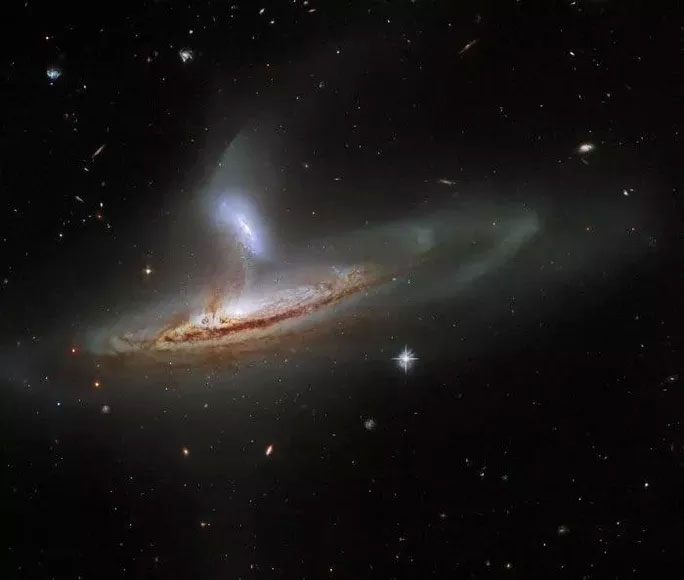What will happen when some galaxies are predicted to collide with the galaxy containing Earth? The Hubble Space Telescope has just captured a forecast image located 320 million light-years away from us.
According to Science Alert, the pair of galaxies is collectively known as Arp 282, which belongs to the Halton Arp Atlas of Peculiar Galaxies. Arp 282 actually consists of a large spiral galaxy named NGC 169, which has a diameter of up to 140,000 light-years, and a smaller galaxy, IC 1559, with a diameter of 40,000 light-years.

The moment two galaxies 320 million light-years away exchange material – (Photo: Hubble/NASA/ESA)
These two galaxies are approaching each other at an extremely close distance, resulting in an unusual phenomenon: mutual material exchange.
According to the European Space Agency (ESA), interactions between galaxies significantly contribute to their evolution. It is still unknown whether they will drift apart again or merge completely, with the larger galaxy swallowing the smaller one. However, this nearly non-merging approach is causing numerous objects to transfer from one galaxy to the other while triggering a robust star formation in one of the galaxies.
The Hubble image clearly shows streams of dust and luminous material shifting back and forth between the two galaxies, although it appears that the majority is moving from the smaller galaxy to the larger one.
This interaction will cause countless gases, dust, and even many “Solar Systems” to be pulled out of this galaxy and settle into the new galaxy.
Currently, the central black holes of both galaxies remain independent and are still “alive” and active. If the two galaxies come close enough, it is possible that the two black holes will merge, creating a cataclysmic event that sends gravitational waves rippling across the universe.
The galaxy containing Earth, the Milky Way – a galaxy that could be as large or larger than NGC 169 – has also been shown to have consumed at least 16 smaller galaxies. However, in the next 2 billion years, it will encounter a formidable opponent, the Andromeda Galaxy, which may be even larger.
This event is predicted to at least propel Earth out of the “habitable zone”. Or perhaps our fate will be like what Hubble has just captured: the entire Solar System being “relocated.”

















































